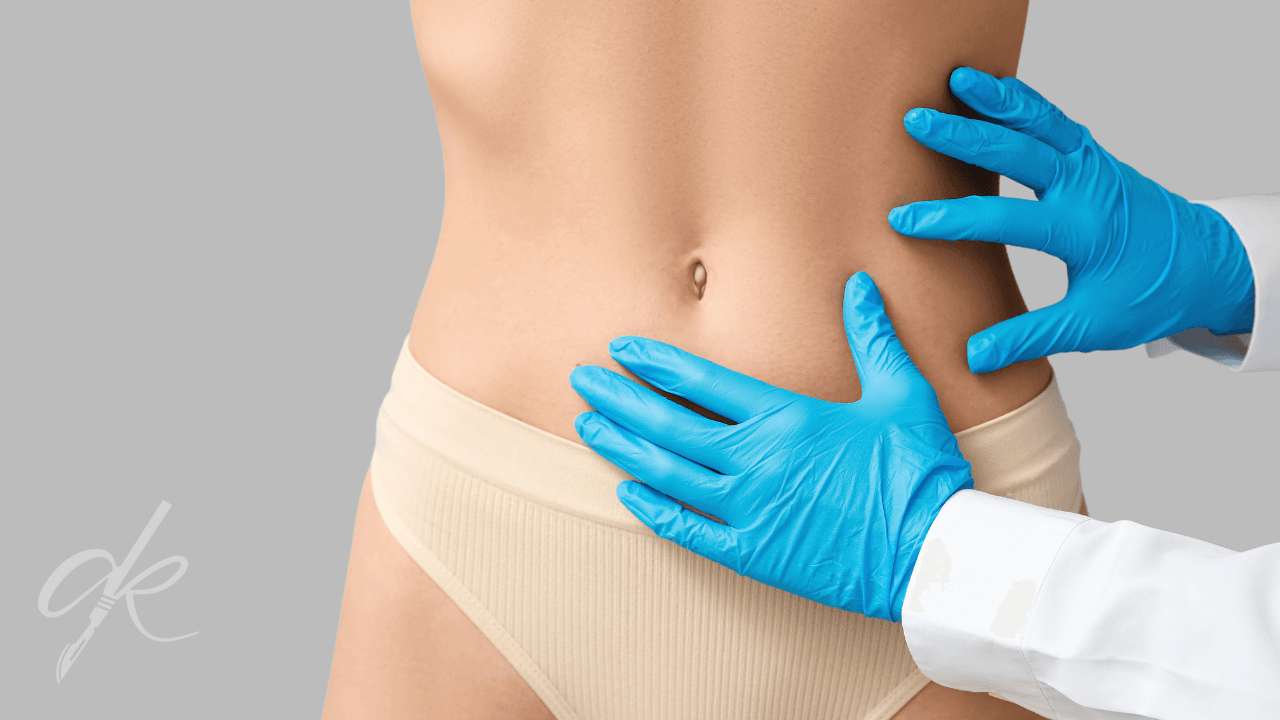The Rebirth of Motherhood: Is Breastfeeding Possible After a Mommy Makeover? Dr. Ahmet Kaplan Explains
Hello dear expectant mothers, new mothers, and all women embracing the beauty of motherhood! I’m Dr. Ahmet Kaplan, a Specialist in Plastic, Reconstructive, and Aesthetic Surgery. I understand that motherhood is one of the most sacred and special periods in our lives. However, this miraculous journey can also bring about some changes in a woman’s body. Especially after childbirth and breastfeeding, many mothers find it challenging to return to their pre-pregnancy shape when they look in the mirror. This is precisely where a magical touch we call “Mommy Makeover” comes into play.
A Mommy Makeover is a personalized aesthetic surgery package designed to repair the physical changes that occur in mothers’ bodies after childbirth and to restore their self-confidence. But for mothers considering this process, one of the most frequently asked questions is often, “Can I breastfeed my baby after these operations?” This question comes up so often that I wanted to explain this important topic to you in detail, in a sincere tone, and with scientific data.
What is a Mommy Makeover and Why is it So Popular?
First, let’s elaborate on what a Mommy Makeover is and why it has become such a popular option among mothers today. While the process of childbirth and breastfeeding leads to a wonderful transformation in a woman’s body, it can also leave some lasting marks. Loose, sagging skin, stretch marks in the abdominal area, loss of volume and sagging in breast tissue, and sometimes unwanted fat deposits… These are common issues mothers face postpartum. A Mommy Makeover is a holistic approach that brings together several aesthetic surgical procedures, offering personalized solutions to these problems.
This package typically includes the following procedures:
- Breast Lift (Mastopexy) or Augmentation: These operations are performed to address the loss of volume and sagging in the breasts that occur after breastfeeding. A breast lift elevates the breasts to a higher position, giving them a more youthful appearance. If there’s a significant loss of volume, breast augmentation with silicone implants can also be added.
- Tummy Tuck (Abdominoplasty): This procedure addresses sagging skin and excess fat resulting from the separation of abdominal muscles (diastasis recti) and the loosening of abdominal skin during pregnancy. This operation helps achieve a flatter, firmer abdomen.
- Liposuction (Fat Removal): Used to remove stubborn fat deposits in areas like the abdomen, waist, hips, and thighs. It helps to define body contours more clearly.
- Vaginal Rejuvenation (Labiaplasty, etc.): These operations are aimed at correcting aesthetic or functional changes in the vaginal area that occur after childbirth.
A Mommy Makeover helps mothers feel better physically and regain their self-confidence. However, when making such an important decision, it’s crucial not to overlook a sensitive topic like breastfeeding.
Mommy Makeover and Breastfeeding: A Detailed Look
Here we come to the most crucial point! “Can I breastfeed my baby after a Mommy Makeover?” Unfortunately, giving a single “yes” or “no” answer to this question isn’t accurate. This is because many factors influence breastfeeding potential. Let’s examine these factors step by step:
1. Do Breast Operations Affect Milk Production? Here’s the Key!
Within the Mommy Makeover package, the most frequently questioned aspect that directly impacts breastfeeding potential is breast operations. Interventions on breast tissue can affect breastfeeding differently, depending on whether the milk ducts and milk-producing glands are damaged.
- Breast Lift (Mastopexy) Operations: Generally, in breast lift surgeries, the nipple and its surrounding area (areola) are moved upwards without being completely detached from the breast tissue. In this technique, milk ducts and nerves are usually preserved. Therefore, breastfeeding is largely possible after a breast lift. Of course, as with any surgical procedure, there’s always a small risk, but modern surgical techniques have minimized this risk. In the techniques I apply, utmost care is taken to protect the milk ducts.
- Breast Augmentation (Silicone Implants) Operations: Silicone implants used in breast augmentation surgeries are typically placed under the breast tissue (submuscular or subglandular). The implants do not directly contact the milk glands and generally do not affect the milk ducts. What matters is where the incision is made. Incisions made close to the nipple (periareolar incision) can, in rare cases, lead to a temporary decrease in milk flow or numbness. However, in the incision methods I prefer (for example, incisions made in the inframammary fold or armpit), the effect on breastfeeding function is almost negligible. Scientific studies have clearly shown that mothers with silicone implants can breastfeed safely and that milk quality is not affected. So if you have concerns like “will breast milk from a mother with silicone be toxic?”, rest assured, this is entirely an urban legend.
- Breast Reduction (Reduction Mammoplasty) Surgeries: This part is a bit different from the others. In breast reduction surgeries, a portion of the breast tissue is removed, and during this process, milk ducts and nerves can be damaged. This can negatively affect milk production and flow. The likelihood of breastfeeding after breast reduction depends on the amount of breast tissue removed and the surgical technique used. In some cases, breastfeeding may not be possible at all, while in others, partial breastfeeding or breastfeeding with supplementary feeding may be possible. If you plan to breastfeed in the future and are considering breast reduction, you must, absolutely must, inform your surgeon about this from the very beginning. This information will help your surgeon choose the most suitable technique that preserves your breastfeeding potential as much as possible.
Important Note: Remember, every woman’s anatomy is different, and surgical results can vary from person to person. Therefore, a detailed consultation before surgery will provide you with the most accurate information.
2. Post-Surgery Recovery and Breastfeeding: Timing is Everything!
If you want to breastfeed after a Mommy Makeover, it is vitally important to allow sufficient time between the surgery and breastfeeding. Your body needs time to recover from the shock of the surgery, for tissues to heal completely, and for you to physically recuperate.
- Generally, waiting at least 6-12 months after breast operations is ideal for tissues to fully heal and to prepare for a possible pregnancy and breastfeeding period. During this time, breast swelling subsides, sensation returns if lost, and incision sites heal completely. This is crucial for both your health and a successful breastfeeding journey.
- Undergoing aesthetic operations during the breastfeeding period is strongly discouraged. There are several important reasons for this:
- Hormonal Changes: During breastfeeding, hormone levels (especially prolactin and oxytocin) in the body are highly variable. These hormones can affect the structure of breast tissue, the condition of milk ducts, and breast size. A breast operation performed during this period could affect the outcome of the operation and negatively impact milk production.
- Medication Use: Painkillers and antibiotics may be necessary after surgery. Many of these medications can pass into breast milk and pose potential risks to your baby.
- Recovery Process: An breastfeeding mother’s body is already expending energy for her baby; undergoing a surgical recovery process on top of that can further deplete her. Insufficient nutrition, fatigue, and stress can slow down healing and increase the risk of infection.
- Risks: Complications such as bleeding or infection that may occur during or after surgery can lead to more serious problems during the breastfeeding period.
For these reasons, it is best to complete the breastfeeding period and wait a few months for your body to return to normal before considering Mommy Makeover operations.
3. Do Silicone Implants Prevent Breastfeeding? Let’s Clarify This Again!
There’s a lot of misinformation and concern circulating about this topic. Once again, I want to emphasize that: No, silicone implants do not poison breast milk or prevent breastfeeding.
- Safety: Decades of extensive research and the experiences of millions of mothers show that silicone implants do not cause any harm to the baby through breast milk. Silicone is a biocompatible, inert (non-reactive) substance.
- Milk Duct Interaction: Since implants are placed behind the milk-producing glands and milk ducts, they have no direct effect on milk production and flow. Silicone molecules do not mix with milk.
- International health authorities such as the American Academy of Pediatrics (AAP) and the FDA (U.S. Food and Drug Administration) confirm that mothers with silicone implants can breastfeed safely. You should have no concerns about this.
My Recommendations for Successful Breastfeeding After a Mommy Makeover
I have some important advice for mothers considering breastfeeding after a Mommy Makeover. These recommendations will both enhance the success of the operation and support your breastfeeding journey:
- Surgical Technique is Important: Before surgery, be sure to discuss your breastfeeding expectations with your plastic surgeon. Experienced surgeons like myself take great care to preserve milk ducts and nerves by opting for techniques that maximize your breastfeeding potential. The incision sites and techniques used in breast lift or augmentation operations are critically important in this regard.
- Share Your Breastfeeding Plan with Your Surgeon: If you plan to get pregnant and breastfeed in the future, be sure to mention this during your pre-operative consultation. This information will be an important factor for your surgeon to consider when planning the operation. This way, approaches that best preserve your ability to breastfeed can be adopted.
- Complete the Post-Surgical Recovery Process: Allow your body sufficient time to fully recover after the operation. Strictly follow your surgeon’s recommended recovery period. During this time, avoid heavy lifting and excessive physical activity, and prioritize adequate rest. Full recovery will also contribute to a healthier and more successful breastfeeding journey afterward.
- Seek Expert Support if Milk Supply Decreases: If you experience a decrease in milk production or difficulty breastfeeding after starting to breastfeed post-operation, don’t panic. Immediately consult a lactation consultant or an obstetrician/gynecologist. These experts can guide you on proper breastfeeding techniques, milk-increasing methods, or supplementary feeding options. Sometimes, even small adjustments can get the breastfeeding process back on track.
- Balanced Nutrition and Hydration: During breastfeeding, healthy and balanced nutrition and ample fluid intake are crucial for adequate milk production. These factors also play a critical role in your overall health and recovery during the post-surgical healing process.
- Be Patient: Both the Mommy Makeover recovery and breastfeeding journeys require patience. Your body undergoes many changes during both processes. Be kind to yourself and remember that everything will fall into place with time.
Frequently Asked Questions (FAQs) and My Answers to Solidify the Topic
To clear up any remaining questions, I’ve compiled the most frequently asked questions about this process:
1. When can I breastfeed after a Mommy Makeover? If you’ve had breast surgery, it’s recommended to wait at least 6-12 months. This period is necessary for tissues to heal completely, swelling to subside, and any post-surgical sensation changes to return to normal. A fully recovered body is better prepared for the breastfeeding process.
2. Do silicone implants affect milk quality? No, silicone implants do not affect your milk. Scientific studies show that silicone does not pass into breast milk and does not harm the baby. You can breastfeed safely.
3. Will my milk supply decrease after breast lift surgery? If the milk ducts and nerves were not damaged during the surgery, your milk production will continue normally. Modern surgical techniques focus on preserving the milk ducts. However, it’s important to remember that there’s always a small risk, and the surgical technique is very important at this point.
4. Can I get a Mommy Makeover while breastfeeding? It is absolutely not recommended. During breastfeeding, your body experiences hormonal changes, which can affect breast structure and the healing process. Additionally, medications you may need to take after surgery can pass into breast milk and pose a risk to your baby. It’s healthiest to consider surgery after breastfeeding has ended and your body has recovered.
5. What should I do if I don’t produce milk after a Mommy Makeover? If you don’t produce milk or if your supply is insufficient when you try to breastfeed after the operation, you should immediately consult a lactation consultant or an obstetrician/gynecologist. They will provide professional support on breastfeeding techniques, methods to increase milk production, or supplementary feeding options.
Embracing a New Chapter of Motherhood…
Dear mothers, as you can see, breastfeeding is largely possible after a Mommy Makeover, but it depends on many variables such as surgical technique, recovery time, and personal factors. The key is to manage this process consciously and take the right steps.
If you have breastfeeding plans and are considering Mommy Makeover operations, you must meet face-to-face with an experienced plastic surgeon like myself before the surgery. During this consultation, we should openly discuss all your expectations, concerns, and future plans. This way, we can create the most accurate personalized plan for you, minimize potential risks, and help you achieve both aesthetically satisfying results and the experience of breastfeeding your baby on your motherhood journey.
Remember, motherhood is a miracle, and every mother deserves to experience this miracle to the fullest. Take care of yourselves, and keep shining with your beauty and health!
With love and health,
Dr. Ahmet Kaplan Specialist in Plastic, Reconstructive, and Aesthetic Surgery





